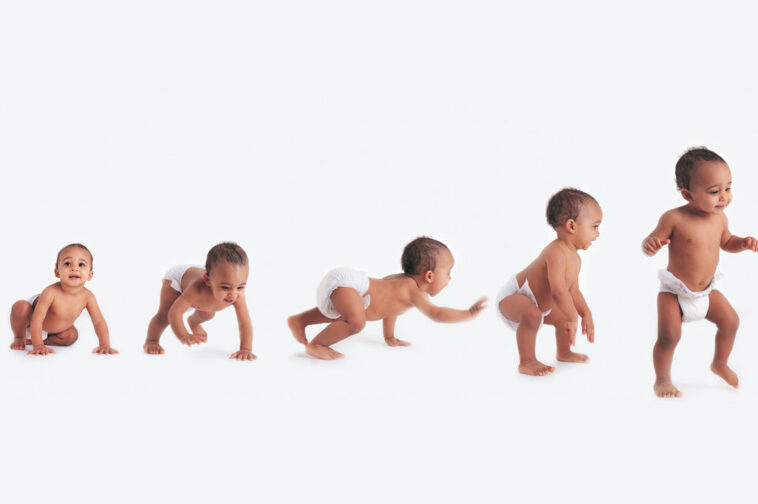From recording that first grin and rollover to gladly sharing your child’s ability to sit up and creep, you’re on the edge of your armchair hanging tight for your little one’s best course of action.
Furthermore, quite possibly the most game-changing milestone may be drawing nearer soon — taking those first charming, flimsy advances.
Strolling is an incredibly expected newborn child accomplishment. It’s a certain sign that your little one is entering the little child zone (and some genuine babyproofing is in your not so distant future).
However, you may likewise be contemplating whether strolling early or “late” is identified with knowledge and surprisingly actual execution later on.
While a 2015 cross-public review related figuring out how to stroll with propelling language capacities in outset have confidence: Research recommends that there’s no demonstrated relationship between strolling early and turning into the following Isaac Newton or Serena Williams.
We realize you need to catch those initial phases in your heart (and on record) everlastingly, so we should take a more inside and out take a gander at these and different signs that meandering is inescapable.
Pulling up to stand
Pulling up on furniture to stand is one of the primary indications of strolling preparation.
This lifts children’s leg muscles and coordination — simply consider the number of squats they’re doing! Over the long run, the little exercises condition your child to stand freely, and afterward, push forward with a couple of flimsy advances.
You can support this by demonstrating their developments while saying “up!” as they pull up, and “down!” as they crouch once more.
Turning into a challenging globe-trotter
In the event that, somewhere off to the side, you get your sweet Houdini out of nowhere remaining on top of the sofa and grinning while prepared to plunge, it very well may be an indication that their inward certainty is sparkling.
While this puts you on mishap alert — and on catcher’s obligation — it’s an incredible formative sign that your child is certain with regards to attempting new things (notwithstanding how perilous they might be). To walk autonomously, children should have self-adequacy in their capacity to do it.
So in case, you’re getting yourself helicopter-momming-it, attempt to find your harmony and let your little traveler push their actual capacities — in a protected climate.
Cruising around
“Cruising” portrays a child strolling while at the same time clutching objects. They may utilize the end table to move around or incline starting with one item then onto the next to work the room.
This shows that your little game is figuring out how to move weight and equilibrium while making strides. It likewise plans for the capacity to push forward, which is needed for strolling.
To advance cruising, make a way of safe items for your child to take hold of and move about.
In any case, take alert with furniture, plants, and different things that aren’t securely gotten to dividers or the ground. They could overturn, prompting an unintentional fall or injury.
Crying, whimpering, and changing rest designs
Who might have believed that the particularity and extra-extended rest could be a hint that your child will before long blast by you on their pussyfoots?
All things considered, strolling is such a major formative achievement that it’s regularly joined by other formative jumps. Your child’s cerebrum and body could be working twofold time, leaving a somewhat less open-minded toddler.
These snapshots of parenthood are intense, so take a full breath and find comfort realizing that (as a rule) things get back to business as usual after a formative achievement is accomplished.
Strolling with help
Offering safe, age-fitting push-toys (not baby walkers — more on this beneath) can motivate your kid to walk while getting a move on.
Newborn children play basic food items trucks or melodic strolling plays with haggles can give pleasure and help to starting walkers. You can likewise hold your child’s hand or give them a cover to hold while you hold the opposite end and walk.
Remaining all alone
The expression on an endearing face’s the point at which they first independent is frequently one of achievement (and maybe an ounce of dread, as well).
As of now, children have the equilibrium and dependability to remain all alone. They regularly try things out for a couple of moments, and afterward continuously represent longer timeframes, helping certainty to make it a stride further.
Make it a great learning movement by leisurely considering for long as your kid stands.
The most effective method to empower strolling in your little one
If your child gives indications of preparation, think about these exercises to help their self-viability and strength.
What could prevent the interaction
You may need your child to oppose all insights, yet support strolling in a positive, safe, and formatively suitable way. Here are a few things to stay away from.
The important point
While strolling may appear as though it’s pretty much as basic as placing one foot before the other, for a child, it’s a stupendous accomplishment that takes actual strength, certainty, and a protected spot to rehearse.
What’s more, despite the fact that your child is sufficiently shrewd to get to this achievement all alone, a steady mentor positively doesn’t do any harm, either (that is you!).
A portion of these signs may let you know that your child is prepared to walk, yet at the same, every youngster’s “go time” is that of their own.
In conclusion, in case you’re at any point worried about your kid’s actual turn of events, address their pediatrician for proficient direction and backing.




